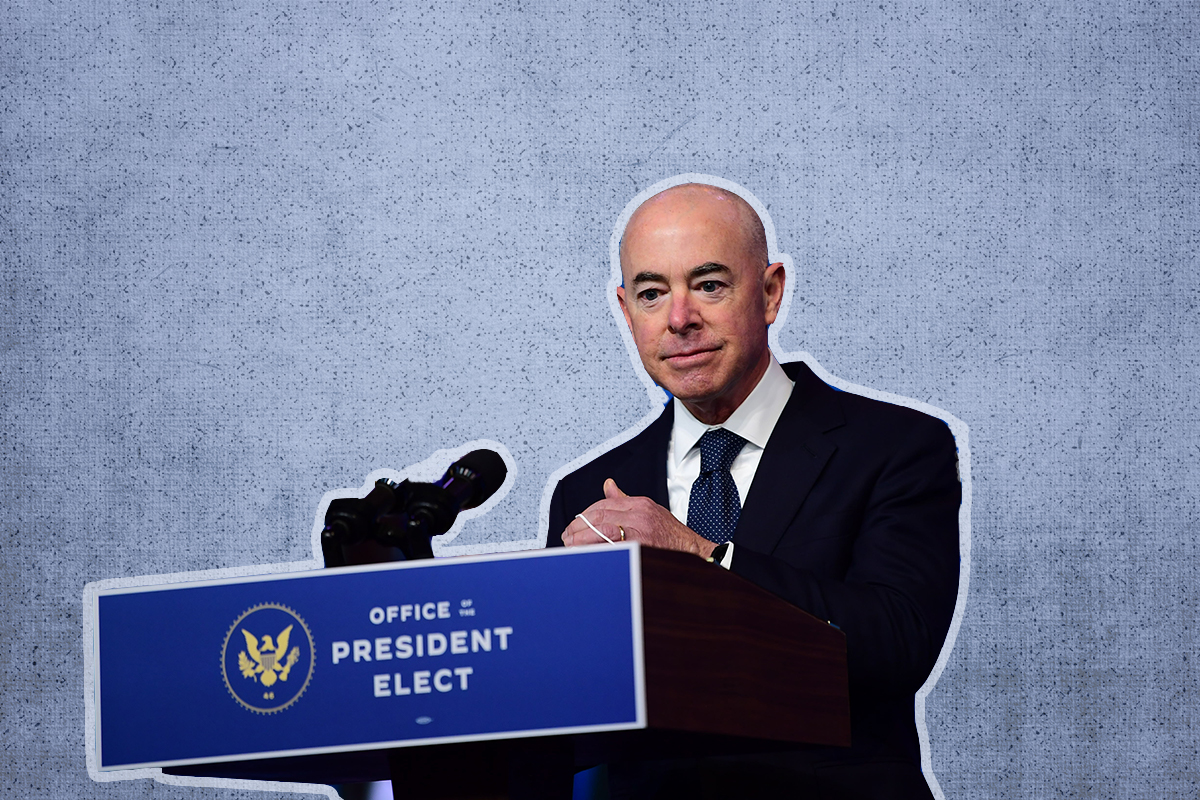Last week, on November 23, when the news of Alejandro Mayorkas’ nomination for Department of Homeland Security Secretary under Biden’s presidency broke out, a sudden feeling of hope ignited inside of me. I knew the significance that his potential appointment would carry for many Sephardic Jews across America. Yet, my optimistic sentiments quickly vanished because, once again, Sephardim were being left out of the whole picture.
One clear thing was how the media only mentioned Mayorkas’ nomination as the ever first immigrant DHS Secretary of Cuban origins, a massive win for the U.S. Latino Community that’s worth celebrating. Yet, his Sephardic heritage was nowhere to be seen as an integral facet of his background.
I wasn’t surprised by this. As a Sephardic Jew myself, I’m used to seeing how time and time again, our community is not being recognized as part of the broader portrait of contemporary Jewry in America.
To understand why Sephardic Jews have been systematically left out of the American Jewry’s picture, one would have to go back more than 100 years to Ellis Island. According to Joel Perlmann’s America Classifies the Immigrants: From Ellis Island to the 2020 Census, between 1899 and 1910, the U.S. Bureau of Immigration began to apply the term “Hebrew” to all Jewish newcomers without distinction, whether they identified as Sephardic, Mizharhim, or Romaniote Jews. At the time, those ethnographical details didn’t matter at all.
The process of erasure didn’t stop there. From 1910 onwards, the U.S. census began to list the mother tongue of who they deemed “foreign white stock,” i.e. foreign-born white people, which for Jews came down to only “Yiddish” or “Hebrew.” Those Ladino, Arabic, or Greek-speaking Jews were overlooked and not included in Jewish immigration statistics altogether. This lack of sensitivity expunged from U.S. history one of the most precious cultural traits and sources these communities had: their oral testimonies, a quintessential element of their culture and religion.
The disregard and improper identification within immigration records not only led to the isolation of these Jewish subgroups from their Ashkenazi coreligionists, but also to a wider wipeout of their experiences from the portraits of the American Jewish narratives. In America, Jewishness has often exclusively been assumed to be synonymous with Germanic or Eastern European descent. Nothing could be further from the truth.
In the case of Sephardim, the descendents of Jews who left Spain and Portugal after being banished in 1492, their Jewishness has been defied and put to the test by dominant Ashkenazic communities for decades. This is something that has defined their experiences as Jews and Americans. More often than not, both the historical indistinction and the absence from popular awareness represents, still, a palpable reality and a struggle for many Sephardic descendants, if not the majority.
Sephardic Jews, any other non-Ashkenazi Jewish subgroups, are cognizant of the media’s treatment of Jewish ethnicities. Judaism is always portrayed as a monolithic tradition. The only time diversity is expressed is when Jews are categorized and defined through Jewish religious denominations. But, whether it is Reform, Conservative, or Orthodox, religious movements are not a definitive trait that can be applied to all Jews. Jewishness shouldn’t be confined only to religion.
It is ironic to see such erasure of Sephardic culture in America. Since colonial times, Sephardic Jews have enriched and been a significant component of the U.S. Jewish complex history. Western Sephardim were the first Jews to arrive on American soil in 1654.
Mayorkas won’t be the first Sephardic Jew to be part of the political history of this country. He’ll join other remarkable American public servants and figures who have been actively involved across all levels of the political arena: Gershom Mendes Seixas was the first native-born Jewish religious leader in America and the first clergyman to deliver sermons in English; Maurice Nadjari was New York special state prosecutor of corruption in the state’s criminal justice system in the 1970s (he’s also rarely been recognized as being Sephardic, but I learned about him in the academic book The Western Sephardim: The History of Some of the Communities Formed in Europe and he was recently included in this piece by the Forward as well); and former Supreme Court Justice Benjamin Cardozo was known to be the first converso and Hispanic Justice on the Court, just to name a few.
Still, few American Jews are aware that Sephardic Jews have always been at the center of public and political life in the U.S. That’s an imperative that needs to change. Mayorkas’ nomination is an opportunity to ramp up visibility for the Sephardim not only within the realms of the American Jewish community but also across the globe.
As Abraham Lavender, professor of sociology at Florida International University, has previously argued, the history of the Sephardim offers valuable lessons for “relations between dominant societies and minority groups.” For example, outside of the U.S., notably in Israel, non-Ashkenazi Jews make up a large segment of the general Jewish population. Therefore these Jews are “consequential to the future of the Jewry,” states Lavender.
In the same vein, David Shasha, director of the Center for Sephardic Heritage in Brooklyn, has written about how the history behind the Sephardim, with the development of “religious humanism” by Maimonides, can be a potential philosophical and intellectual tool to fully comprehend many of the crises that confront American Jews, including assimilation and cultural alienation.
The importance of Mayorkas’ appointment lies in acknowledging that the Sephardim have plenty to offer not only to the Jewish community but also to American society at large.
Both the mass media and every one of us as Jews have an honorable and equally valuable duty: to promote diversity and give voice to every distinct group within the Jewish population. It is time we challenge mainstream categorization, public perception, and stereotypes of Jewishness and what it means to be Jewish in America and around the world.
By enriching popular awareness, we can prevent further denial of the experiences, adversities, and achievements of the multifaceted Jewish minority groups who for many years have not been granted the same attention and acknowledgment bestowed on Ashkenazim. The sooner we realize this, the faster we can progress in our collective effort to celebrate, strengthen, and shift the intellectual and cultural rhetoric — and the broader narratives of the American Jewish experience.



